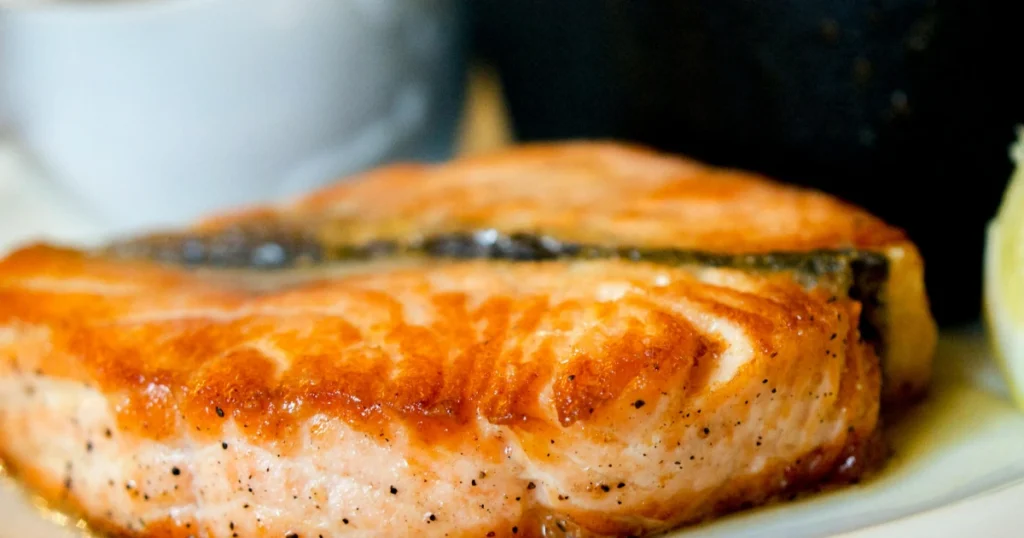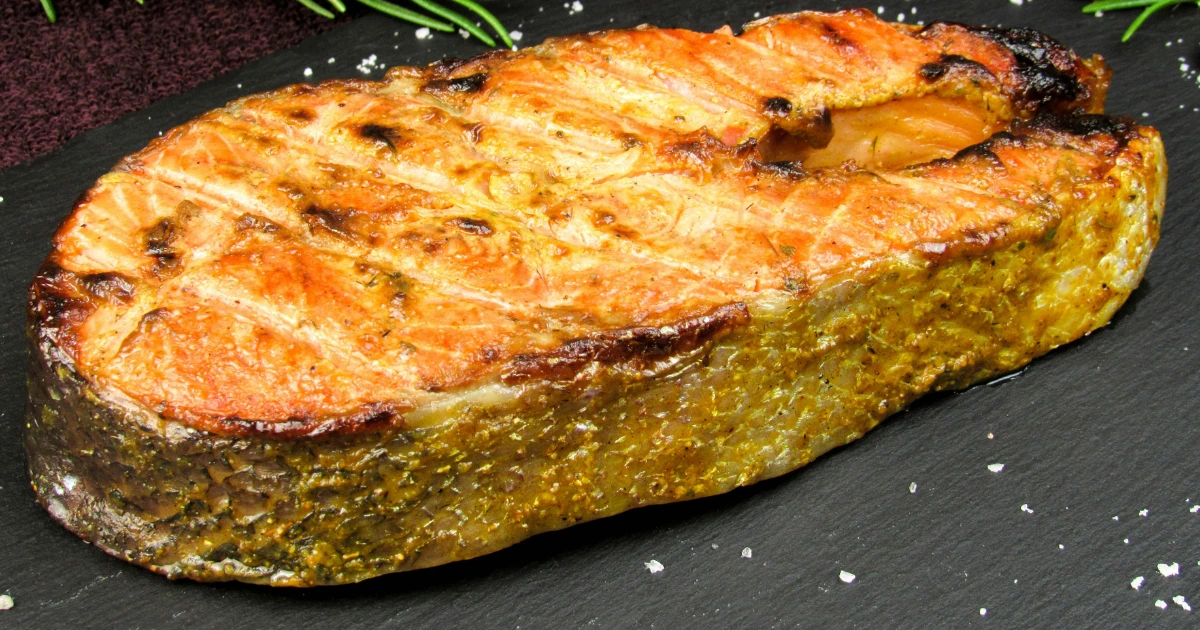Can Dogs Eat Cooked Salmon? Why Cooking It Matters for Their Health
Table of Contents
Salmon is often celebrated for its nutritional benefits for humans, but can dogs eat salmon? This is a common question among pet owners looking to provide their furry friends with a healthy and balanced diet. The answer is yes, dogs can eat salmon, but it’s essential to understand the risks and benefits, especially when it comes to whether it’s cooked or raw. Cooking salmon ensures it’s safe for your dog while maximizing its nutritional value.
Can Dogs Eat Salmon? The Facts Every Pet Owner Should Know
Nutritional Benefits of Salmon for Dogs
Salmon is an excellent source of high-quality protein, essential for maintaining your dog’s muscle health and energy levels. It’s also packed with omega-3 fatty acids, which promote a shiny coat, healthy skin, and overall well-being. Additionally, salmon provides important vitamins such as B12 and D, as well as minerals like selenium and potassium.
Health Risks of Feeding Salmon to Dogs
While salmon offers many benefits, it also comes with risks. Raw or undercooked salmon can contain harmful parasites that cause salmon poisoning disease (SPD), which can be fatal if left untreated. Another concern is mercury and other heavy metals found in some fish, which can harm your dog over time if consumed in large amounts.
Is Salmon Safe for Puppies?
Yes, salmon can be safe for puppies, but it should be introduced carefully. Cooked salmon in small portions is ideal, as it’s easier for their developing digestive systems to handle. Always consult your veterinarian before adding salmon to your puppy’s diet.
Can Dogs Eat Cooked Salmon? Why Cooking Makes a Difference
Why Cooking Salmon Is Essential for Dogs
Cooking salmon eliminates harmful bacteria and parasites that may be present in raw fish. This makes it much safer for dogs to consume. Cooked salmon also reduces the risk of SPD, a disease caused by the parasite Nanophyetus salmincola that can be deadly if untreated.
Raw vs. Cooked Salmon: Which Is Safer for Dogs?
While some pet owners advocate for raw diets, feeding raw salmon to dogs is not recommended due to the risks of parasites and bacterial infections. Cooked salmon, on the other hand, retains its nutritional value while being much safer for your pet.
Common Cooking Methods and Safety Tips
The best ways to cook salmon for dogs include steaming, baking, or grilling it without any added oils, spices, or seasonings. These additives can upset your dog’s stomach or even be toxic. Always ensure the salmon is thoroughly cooked and free of bones and skin to prevent choking hazards or injuries.
Can Dogs Eat Canned Salmon?

Is Canned Salmon Safe for Dogs?
Canned salmon can be a convenient and safe option for dogs, but it’s important to choose the right product. Look for canned salmon packed in water with no added salt or seasoning, as these can be harmful to dogs.
Nutritional Benefits of Canned Salmon
Canned salmon retains many of the same nutrients as fresh or cooked salmon, including omega-3 fatty acids, protein, and essential vitamins. It can be a great alternative when fresh salmon isn’t available.
Serving Tips for Canned Salmon
When serving canned salmon to your dog, drain any liquid and check for small bones, even if the label states it’s boneless. Serve it in moderation as part of a balanced diet, and consult your veterinarian for portion size recommendations.
How to Prepare Salmon for Dogs Safely
Choosing the Right Salmon
When selecting salmon for your dog, opt for fresh, high-quality fish. Wild-caught salmon is often preferred over farmed salmon due to lower levels of contaminants and additives.
Steps to Cook Salmon for Your Dog
- Remove all bones and skin from the salmon.
- Cook the fish thoroughly using a method like steaming or baking.
- Allow it to cool before serving.
Serving Tips and Portion Sizes
Portion size matters! Too much salmon can lead to an upset stomach or even pancreatitis. As a general guideline, cooked salmon should make up no more than 10% of your dog’s overall diet. Consult your veterinarian for specific recommendations based on your dog’s size and dietary needs.
Health Benefits of Salmon for Dogs
Improved Skin and Coat Health
The omega-3 fatty acids in salmon are excellent for maintaining a shiny coat and preventing dry, itchy skin. These benefits are particularly helpful for dogs with allergies or sensitive skin.
Supports Joint and Brain Health
DHA and EPA, two types of omega-3s found in salmon, are known to support joint health and reduce inflammation. They’re also crucial for brain development, making salmon a great choice for puppies and senior dogs alike.
Helps with Inflammation and Allergies
The anti-inflammatory properties of salmon make it a good option for dogs suffering from arthritis or other inflammatory conditions. It’s also a hypoallergenic protein source, which can benefit dogs with food sensitivities.
Alternatives to Salmon: Other Fish Dogs Can Eat Safely
Other Dog-Friendly Fish Options
If you’re looking for alternatives to salmon, consider sardines, mackerel, or whitefish. These fish are also rich in omega-3s and are generally safe for dogs when cooked properly.
Comparing Nutritional Value
Each type of fish has unique nutritional benefits. For example, sardines are small and have lower mercury levels, while whitefish is mild and easy to digest. These can be good options for dogs who may not tolerate salmon well.
Precautions with Seafood for Dogs
Regardless of the type of fish, always ensure it’s free of bones, thoroughly cooked, and served without seasonings. Avoid fish high in mercury, such as swordfish or tilefish, as these can be harmful to dogs over time.
In conclusion, cooked salmon is a nutritious and tasty treat for dogs, packed with omega-3 fatty acids that support their skin, coat, and overall health. When prepared correctly, free from bones, and served in moderation, salmon can be a safe and beneficial addition to your dog’s diet. However, always consult with your veterinarian to ensure it fits your dog’s dietary needs and to determine the appropriate portion sizes. By following these precautions, you can confidently offer your dog a delicious and healthy snack while enhancing their well-being.

